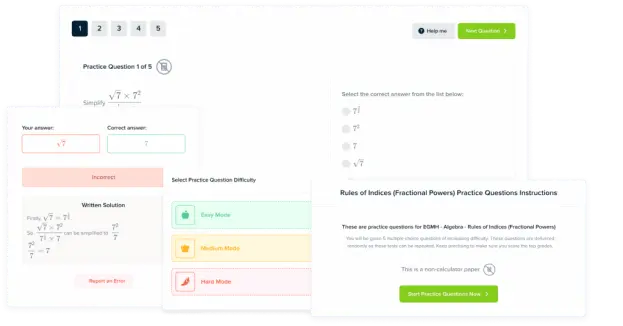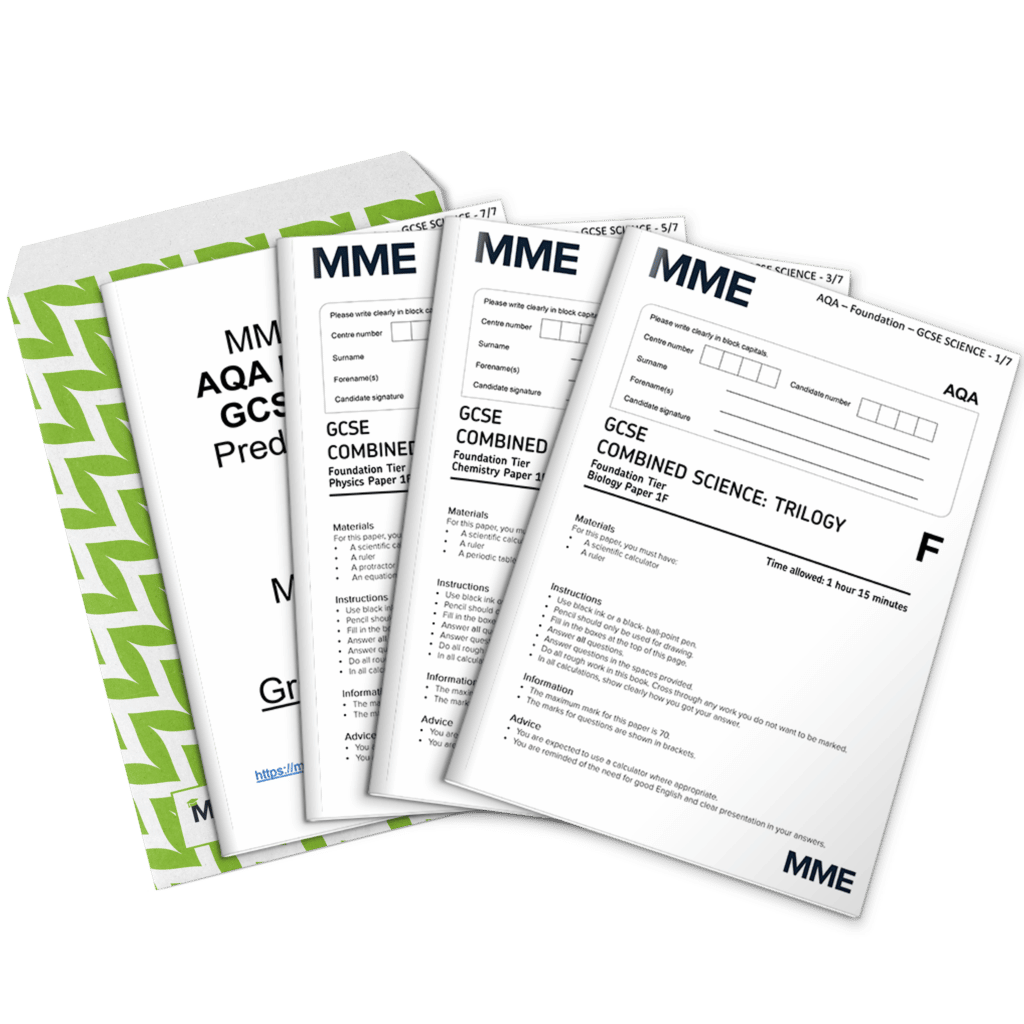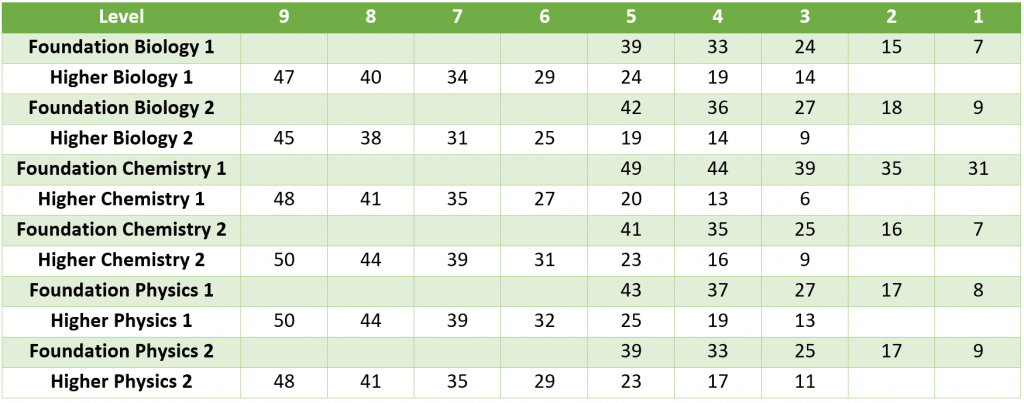GCSE Combined Science AQA Past Papers
Combined Science Grade Boundaries
View our predictions on our TikTok account
Combined Science: Trilogy (8464)
Inserts
AQA GCSE Past Papers June 2023
Foundation
Higher
AQA GCSE Past Papers June 2022
Foundation
Higher
AQA GCSE Past Papers November 2021
Foundation
Higher
AQA GCSE Past Papers November 2020
Foundation
Higher
AQA GCSE Past Papers June 2019
Foundation
Higher
AQA GCSE Past Papers June 2018
Foundation
Higher
Specimen Papers
Foundation
Higher
AQA GCSE Combined Science past paper grade boundaries Trilogy June 2018
Trilogy
Subject content for AQA Biology
1. Cell biology
2. Organisation
3. Infection and response
4. Bioenergetics
5. Homeostasis and response
6. Inheritance, variation and evolution
7. Ecology
Subject Content for AQA Chemistry
8. Atomic structure and the periodic table
9. Bonding, structure, and the properties of matter
10. Quantitative chemistry
11. Chemical changes
12. Energy changes
13. The rate and extent of chemical change
14. Organic chemistry
15. Chemical analysis
16. Chemistry of the atmosphere
17. Using resources
Subject Content for AQA Physics
18. Energy
19. Electricity
20. Particle model of matter
21. Atomic structure
22. Forces
23. Waves
24. Magnetism and electromagnetism
AQA GCSE Science Trilogy Assessments
There are six papers for the GCSE Science Trilogy course: two biology, two chemistry and two physics. Each of the science papers will assess the different topic areas highlighted above with questions on factual recall, applied areas and relevant maths making up the exams.
Biology Paper 1- Biology topics 1–4: Cell Biology; Organisation; Infection and response; and Bioenergetics.
Assessment Structure
- Written exam: 1 hour 15 minutes
- Foundation and Higher Tier
- 70 marks
- 16.7% of GCSE
- Questions: Multiple choice, structured, long and short questions with recall and applied questions.
Biology Paper 2 – Biology topics 5–7: Homeostasis and response; Inheritance, variation and evolution; and Ecology.
Assessment Structure
- Written exam: 1 hour 15 minutes
- Foundation and Higher Tier
- 70 marks
- 16.7% of GCSE
- Questions: Multiple choice, closed short answer with longer applied questions.
Chemistry Paper 1 – Chemistry topics 8–12: Atomic structure and the periodic table; Bonding, structure, and the properties of matter; Quantitative chemistry; Chemical changes; and Energy changes.
Assessment Structure
- Written exam: 1 hour 15 minutes
- Foundation and Higher Tier
- 70 marks
- 16.7% of GCSE
- Questions: Applied, recall, long, short and multiple choice.
Chemistry Paper 2 – Chemistry topics 13–17: The rate and extent of chemical change; Organic chemistry; Chemical analysis; Chemistry of the atmosphere; and Using resources.
Assessment Structure
- Written exam: 1 hour 15 minutes
- Foundation and Higher Tier
- 70 marks
- 16.7% of GCSE
- Questions – Multiple choice, closed short answer, and structured.
Physics Paper 1 – Physics topics 18–21: Energy; Electricity; Particle model of matter; and Atomic structure.
Assessment Structure
- Written exam: 1 hour 15 minutes
- Foundation and Higher Tier
- 70 marks
- 16.7% of GCSE
- Questions: Long and short questions with applied longer questions. Multiple choice also included.
Physics Paper 2- Physics topics 22–24: Forces; Waves; and Magnetism and electromagnetism
Assessment Structure
- Written exam: 1 hour 15 minutes
- Foundation and Higher Tier
- 70 marks
- 16.7% of GCSE
- Questions – All types of questions from long, short and multiple choice.
Combined Science: Synergy (8465)
AQA GCSE Past Papers November 2022
Foundation
Higher
AQA GCSE Past Papers November 2021
Foundation
Higher
AQA GCSE Past Papers November 2020
Foundation
Higher
AQA GCSE Past Papers November 2019
Foundation
Higher
AQA GCSE Past Papers November 2018
Foundation
Higher
Specimen Papers
Foundation
Higher

MME Premium Membership
£19.99
/monthLearn an entire GCSE course for maths, English and science on the most comprehensive online learning platform. With revision explainer videos & notes, practice questions, topic tests and full mock exams for each topic on every course, it’s easy to Learn and Revise with the MME Learning Portal.
Sign Up NowAQA Synergy Science Specification Content
1. Building blocks – DNA, sugars, proteins and other biological molecules.
2. Transport over larger distances
3. Interactions with the environment
4. Explaining change
5. Building blocks for understanding
6. Interactions over small and large distances
7. Movement and interactions
8. Guiding Spaceship Earth towards a sustainable future
9. Key ideas
Assessments
Paper 1 – Life and environmental sciences
Assessment structure:
- Topics 4.1–4.4: Biological molecules; Transport over larger distances; Interactions with the environment and Explaining change.
- Written exam: 1 hour 45 minutes
- Foundation and Higher Tier papers available
- 100 marks
- 25% of the Science GCSE
- Questions: There are structured questions; longer and shorter questions as well as some multiple choice. Some longer questions have a greater emphasis on knowledge and application (AO1 and AO2) than analysis and evaluation (AO3).
Paper 2 – Life and environmental sciences
Assessment Structure
- Topics 4.1–4.4: Building blocks; Transport over larger distances; Interactions with the environment and Explaining change.
- Written exam: 1 hour 45 minutes
- Foundation and Higher Tier papers available
- 100 marks
- 25% of GCSE Science
- Questions: There are all types of questions including long and short answers, applied and recall questions. This paper assesses more of the analysis and evaluation (AO3) skills, and knowledge based around the required practicals.
Paper 3 – Physical sciences
Assessment Structure
- Topics 4.5–4.8: Building blocks for understanding; Interactions over small and large distances; Movement and interactions and Guiding Spaceship Earth towards a sustainable future.
- Written exam: 1 hour 45 minutes
- Foundation and Higher Tier
- 100 marks
- 25% of GCSE
- Questions: Multiple choice, structured, closed and open short answer questions, with greater emphasis on knowledge and application (AO1 and AO2) than analysis and evaluation (AO3).
Paper 4 – Physical sciences
Assessment Structure:
- Topics 4.5–4.8: Building blocks for understanding; Interactions over small and large distances; Movement and interactions and Guiding Spaceship Earth towards a sustainable future.
- Written exam: 1 hour 45 minutes
- Foundation and Higher Tier examinations available
- 100 marks
- 25% of the Science GCSE Synergy
- Questions: This paper assesses the analysis and evaluation (AO3) skills part of the course, as well as the required practicals. Questions include multiple choice and a mixture of long and short answers.

MME Premium Membership
£19.99
/monthLearn an entire GCSE course for maths, English and science on the most comprehensive online learning platform. With revision explainer videos & notes, practice questions, topic tests and full mock exams for each topic on every course, it’s easy to Learn and Revise with the MME Learning Portal.
Sign Up Now















